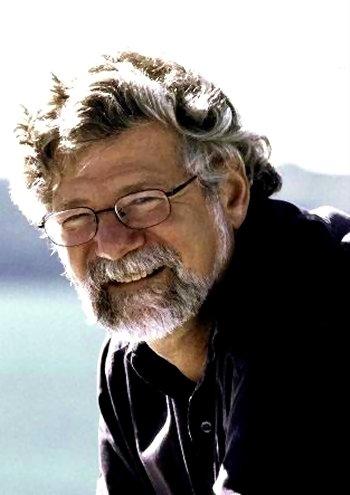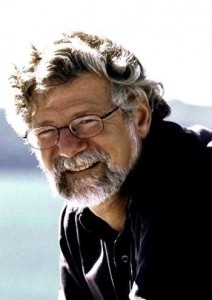
 Archival interview with Barrie M. Osborne from the official Matrix website.
Archival interview with Barrie M. Osborne from the official Matrix website.
MATRIX: What does your role as executive producer for ‘The Matrix’ encompass?
BARRIE: My role in ‘The Matrix’ is to try to deliver the film that Larry and Andy have envisioned, within the confines of the budget and schedule that the studios have agreed to. When you come into conflict with this, or the vision has changed, or something is different on the set, I try to convey that to the studio in a convincing manner. This is so we can get their support to be able to continue in the manner that we want to, so we can complete the film in the manner that supports the vision. It all really comes out of the initial design and the script – the story boards as well – what they started out with a long, long time ago.
MATRIX: I heard that the advance footage that was sent back to Warner Bros went over really well. Has that helped?
BARRIE: Yeah. That was one of the early things that happened when we started to feel that we were going to need a little more time than initially planned for. There were number of things that caused us to take a little longer than initially laid out. When you start a picture, you try to be realistic on your schedule. You begin with a schedule that is achievable, but perhaps on the optimistic side. Inevitably, when you’re working on any project that is as complex as making a movie, you are going to run into unforeseen difficulties. We ran into several. We had some actor injuries in training, which meant that we had to reshuffle our schedule. Some scenes that the actors had trained hard for during three months of pre-production, were now pushed back to the end of the schedule. Which then meant that we wouldn’t be as efficient in filming those things as we had originally set out for. To try to get support for that from the studio, one of my ideas was to show the studio some film. I really encouraged Larry, Andy and Zach to do that. They were a little reluctant at first, not having gone through this kind of an experience before. But I know that you really need to win over the support of the studio, and if you don’t – if you won’t show them anything – they won’t understand the scope of the movie just from reading the script, and having the conversations we had in pre-production. They have to see what kind of footage we’re getting. You have to see it on a screen to really understand the nature of the film and the size of the sets.
MATRIX: Is that not typical, sending this type of teaser back to the studio?
BARRIE: No, its not typical. But if you are making a complex film, it is a wise thing to do.
MATRIX: How did you first get involved with ‘The Matrix’?
BARRIE: ‘The Matrix’ had been in a number of phases of pre-production. At the point in time when Larry and Andy cast the movie with Keanu and Laurence, and when they decided they were going to come to Australia, they contacted me. Larry and Andy contacted me, as did Warner Bros and Joel Silver – all three contacted me separately. They felt that I would be a good match for this style of production because I had prior experience in Australia and because of my experience with ‘Face Off’.
MATRIX: What was the other film you filmed here before ‘The Matrix’?
BARRIE: Years ago I did ‘Rapa Nui’, which was the film set on Easter Island. That was filmed on Easter Island, largely with an Australian crew, then we came back to Australia to do a little post-production filming. Prior to that I had done a picture for Disney, actually filming in New Zealand, but partially with an Australian crew.
MATRIX: What did you think of the material? Did that come into play in your decision to work on ‘The Matrix’?
BARRIE: Of course. I like the screenplay a lot. What attracts me to pictures is the personality of the people that I am going to be working with, and the screenplay. So the first step was the screenplay, which I really enjoyed, I thought it was a very original piece of work and liked the message so I felt attracted to it. Then I met Larry and Andy, and I thought they’d be great guys to work with. When I saw the storyboards, I realized it would be a really cool picture to do, so everything clicked for me from that point. Then of course, they’ve got to feel the same way about me… evidently they did, that’s why I’m here.
MATRIX: The filming of ‘The Matrix’ will finish at 118 days. Comparatively speaking, is this a long shoot?
BARRIE: ‘Face Off’ was 93 days. Generally, pictures of this kind of complexity that have a lot of stunts and visual effects require a longer shooting schedule. But I have worked on things that are short. I suppose ‘Apocalypse Now’ was the longest thing that I’ve worked on.
MATRIX: Have there been any particularly memorable moments during filming?
BARRIE: What really sticks out to me about this movie is the dedication of the cast and crew. The fact that Laurence, Keanu, Carrie Anne and Hugo Weaving dedicated three months of pre-production to learning Kung Fu and working with Yuen Wo Ping, our fight choreographer. That kind of dedication to a project is rare, it was a joy to see… to watch that, and see the story boards actually be achieved was a thrill. So to pick one day out of that would be a difficult thing for me to do. The other interesting thing to me, when I think back, was the approach to this movie. Every movie is approached in a different way, when you decide on the style and the technique that you are going to use for the film. In this movie, the approach really comes from the story, so I find it illustrative of that point. On ‘Face Off’ they originally wanted to do a lot of green screen stuff – the fight on the deck of the boat, the airplane going down the runway – and I felt that it would be supporting the story, the realism, if that was done practically. To actually make it a process on a real boat. But on this movie I found we argued a different point. We had to argue and convince Larry and Andy that they would actually accomplish the Trinity chase on the roof top better on stage, than they could have on real roof tops. Originally they had wanted to the chase on real roof tops because the story is saying it is reality. But in actuality there is something altered – different – it really supported doing some of this work on stage. Similarly the choice of using the Hong Kong wire team, is supportive of the story. The Hong Kong style is a little bit forced, a little bit exaggerated, larger than life, theatrical – again the choice to use them comes from the story – which is what it is all about.
MATRIX: What does the concept of ‘The Matrix’ mean to you?
BARRIE: What it says to me is that if you want something you really have to believe in yourself, you really have to go for it. So the hero of this film has to overcome his own fears and his own doubts, to be able to free himself and live to his full potential.
MATRIX: Thanks Barrie.
Interview by Spencer Lamm

Be the first to comment